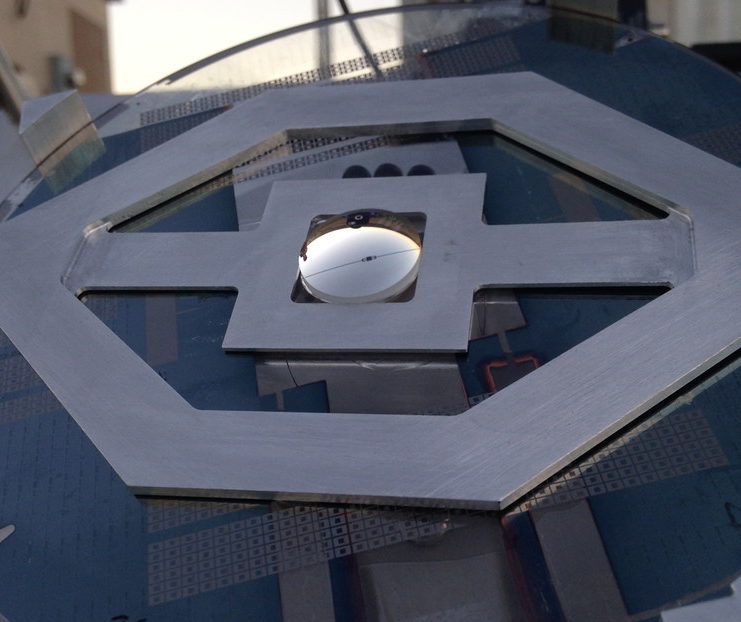Concentrating photovoltaics (CPV) is a popular area of research in solar, with strong potential for high efficiency. Most current CPV systems, says Penn State, are very large and have to track the sun during the say, making them suitable for large open spaces but more limited in other applications.
“What we’re trying to do is create a high efficiency CPV system in the form factor of a traditional silicon solar panel,” says Chris Giebink, Assistant Professor of Electrical Engineering at Penn State. “Our goal in these recent experiments was to demonstrate the technical feasibility of such a system.”
The researchers embedded a tiny multi-junction solar cell, approximately 0.5mm², into a sheet of glass, which then slides between a pair of lenslet arrays. The cell sheet tracks the sun by sliding between the array, requiring around 1cm of movement for a full day. The system was tested from dawn to dusk over two sunny days, alongside a commercial cSi solar cell. “We put together a prototype with a single microcell,” continues Giebink, and a pair of lenses that concentrated sunlight more than 600 times, took it outdoors and had it automatically track the sun over the course of an entire day.”
The researchers reported that their CPV system reached 30% efficiency, and over one day produced 54% more energy than the silicon cell. The team added that, if the heating of the cell caused by the concentrated sunlight could be avoided, as much as 73% more energy could be produced, in comparison to the tested silicon cell.
While the technology has existed for several decades, CPV systems have been not widely adopted for commercial power generation. One of the key issues is that they require strong, direct sunlight to function, which Giebink acknowledges, stating that the technology could be perfect for areas such as the southwestern United States or Australia. He also notes that scaling the system to a larger size, and proving long term reliability will also present major challenges, however Giebink is optimistic about the technology’s potential. “With the right engineering, we’re looking at a step change in efficiency that could be useful anywhere it’s important to generate a lot of solar power from a limited area.”
This content is protected by copyright and may not be reused. If you want to cooperate with us and would like to reuse some of our content, please contact: editors@pv-magazine.com.




By submitting this form you agree to pv magazine using your data for the purposes of publishing your comment.
Your personal data will only be disclosed or otherwise transmitted to third parties for the purposes of spam filtering or if this is necessary for technical maintenance of the website. Any other transfer to third parties will not take place unless this is justified on the basis of applicable data protection regulations or if pv magazine is legally obliged to do so.
You may revoke this consent at any time with effect for the future, in which case your personal data will be deleted immediately. Otherwise, your data will be deleted if pv magazine has processed your request or the purpose of data storage is fulfilled.
Further information on data privacy can be found in our Data Protection Policy.